HP EliteBook 8740w: IPS on the Go
by Dustin Sklavos on December 8, 2010 3:10 AM EST- Posted in
- Laptops
- IT Computing
- Intel
- HP
- EliteBook
- Mobile Workstation
- Quadro
- NVIDIA
Application and Workstation Performance
Our review HP EliteBook 8740w leverages an Intel Core i7-820QM processor and a nigh obscene 16GB of DDR3, but keeps the storage conservative with the Western Digital Scorpio Black. In what may seem like an unfair fight, we've also included scores from some of our desktop review units to give you a feel for the kind of trade-off you're making in spending up for the mobile form factor.
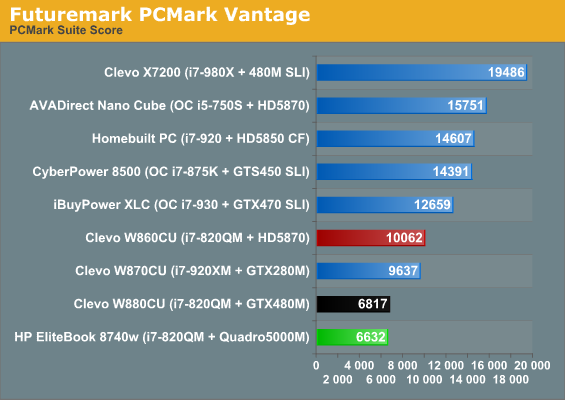
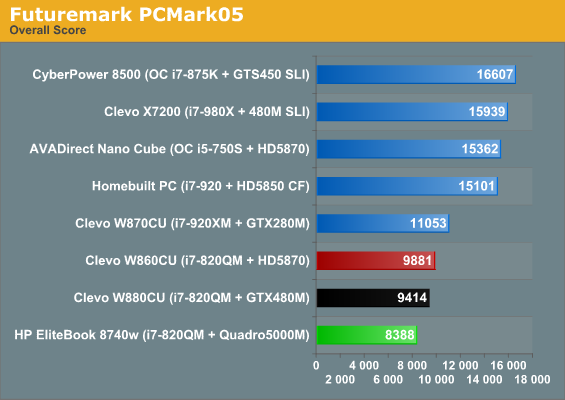
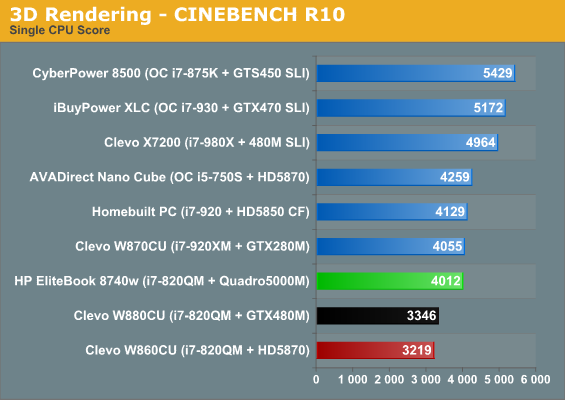
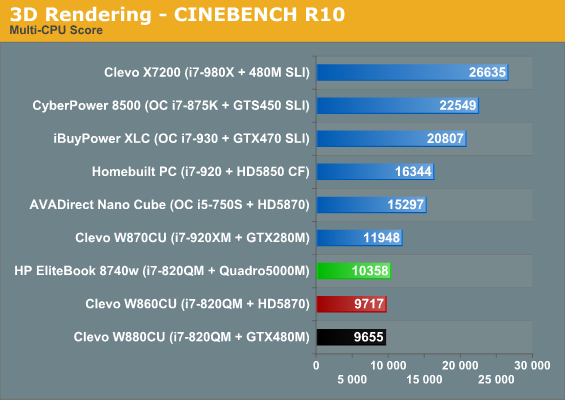
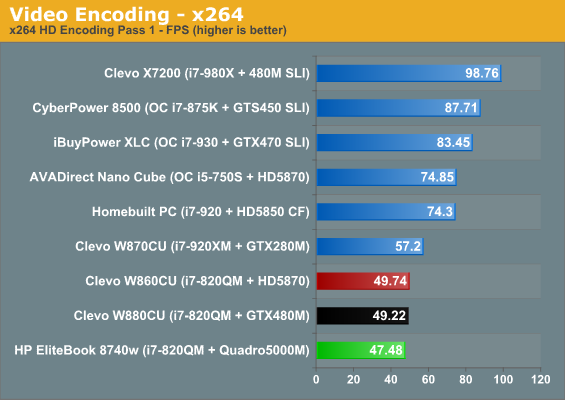
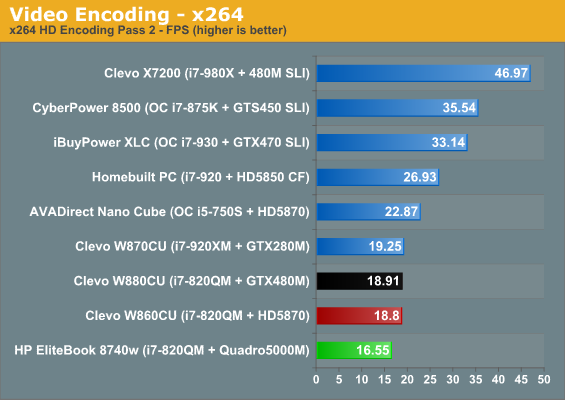
What we find is a bit troubling: the 8740w seems to come in consistently behind in every test but Cinebench. That said, AVADirect is fond of sending us Clevo units equipped with SSDs, and we think there's a good chance that's what's making up the difference here: the Scorpio Black mechanical drive in the EliteBook just can't pick up the slack. With all that said, these numbers aren't bad by any stretch of the imagination and are still miles ahead of competing consumer notebooks.
Since this is a workstation and bred for workstation-based tasks, we also did a quick run with SPECviewperf 11.

A visit to the results page of SPEC's site reveals a healthy lead over the previous generation mobile workstation parts but still a far cry from desktop workstation kit.










63 Comments
View All Comments
erple2 - Friday, December 10, 2010 - link
That 1000 dollars more or less covers the upgrade from the FX3800M to the FX5000M. So I'd be willing to bet that's where the cost goes.Dug - Wednesday, December 8, 2010 - link
Many designers work at the office and at home. The 17" works well because its very hard to work on a 15" screen.The size isn't bad when you consider they are only transporting it from office to car and car to home.
Now if you are traveling everywhere such as on a plane, then you wouldn't be looking at one of these anyway.
I'm just glad Anantech is taking the time to review a wide variety of laptops and emphasizing screen quality. Hopefully product managers and marketing get off their high horse and realize that people don't want crap. A lot of us are willing to pay for quality. If laptop manufacturers would just look at what has been reviewed and look at all the plus and minuses, then make a notebook that is all pluses. It really isn't that hard. Apple really took charge on this (although not perfect), so I hope others follow.
kmmatney - Wednesday, December 8, 2010 - link
I'm an Engineer/Scientist/Programmer who works at home, and use a 17" Dell with an upgraded 1920 x 1200 panel, bought in early 2007. I remember having to fight hard to justify the extra $300 in screen and cpu upgrades, but they were well worth it. Our normal upgrade laptop cycle is 3 years, but with a T7200 Merom and a 1920 x 1200 "true life" display, I can hang onto my system for a while yet. Along with a recent SSD upgrade, my system is about as fast as anything I can buy new at the moment (until SandyBridge, I think).What kills me sometimes is the weight - it can really hurt your shoulder after carrying it a while. My computer case has wheels, so I use those whenever possible.
I fly a lot, so get free upgrades to economy plus on United. With the extra leg room, I can easily use my 17" laptop on the plane.
Belard - Wednesday, December 8, 2010 - link
With one our ThinkPad users, he has a dock that allows him to connect two 23" 1920x1080 screens. So he gets the portability of a 14" notebook with the power to drive two big monitors. Not bad for a $250 dock with DVI & Display Port connectors, which also has USB, Ethernet and recharges the notebook's battery.Burner.Tom - Wednesday, December 8, 2010 - link
Are u sure about only 1-year standard warranty, because as I know, all EliteBooks have 3 yeat standard warranty.SandmanWN - Wednesday, December 8, 2010 - link
Should be 3 years. Even the models below this, ProBooks, have 3 years.sheltem - Wednesday, December 8, 2010 - link
It's 3 years - 8740w ownerDorin Nicolaescu-Musteață - Wednesday, December 8, 2010 - link
"even after calibration colors can feel oversaturated. 100% Adobe RGB gamut is good for those that need it, but for everyone else working in sRGB color space, that's the penalty."Sorry guys, but that's just not true.
One has to use color-managed applications to judge if color is good or not. In a non-color-managed environment, a wide gamut display will have incorrect (oversaturated) colors, just like a low-gamut display (undesaturated).
Just curious, how do you judge whether the colors are oversaturated or not? What do you look at and with what software?
kmmatney - Wednesday, December 8, 2010 - link
The eyes are a pretty good judge at oversaturation.In my line of work, I have to often align X-ray beams for scientific equipment. I can use a high-sensitive, high-precision detector, or just use my eyes and a fluorescent screen to maximize the X-ray beam intensity. Although I always double-check things using the detector, I've found that my eyes can detect tiny changes in the green glow from the fluorescent screen, and always get the sensitive alignments spot on. We are talking about very small changes - its pretty amazing what the eyes can detect.
JarredWalton - Wednesday, December 8, 2010 - link
I'm curious... what exactly is "not true" about the above statement? (This is directed at Dorin.) Good for those that need it is another way of saying "good in color managed applications", which is why we go on to state that everyone working in sRGB isn't going to like it as much.